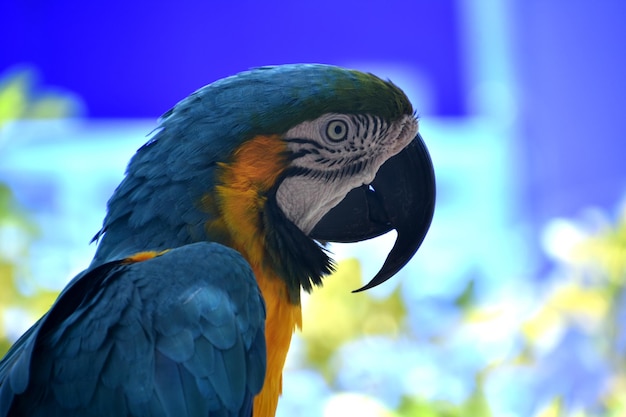Interesting facts about Scarlet Macaws

Scarlet macaws are known for their vibrant red, yellow, and blue feathers.
These birds are native to the rainforests of Central and South America.
Scarlet macaws have a wingspan of up to 3.3 feet.
Due to habitat loss and illegal pet trade, these macaws are considered endangered.
Scarlet macaws are incredibly intelligent and can mimic human speech.
These birds have strong beaks that they use to crack nuts and seeds.
Scarlets macaws are social creatures and often live in flocks of up to 30 individuals.
The vibrant colors of their feathers serve as a form of camouflage in the rainforest.
These macaws are monogamous and mate for life.
Scarlet macaws are excellent fliers and can reach speeds of up to 35 miles per hour.
These birds have a long lifespan, with some individuals living up to 50 years.
Scarlet macaws play an important role in seed dispersal within their ecosystem.
Due to their bright plumage, these macaws are often targeted by poachers.
Scarlet macaws have a diet consisting mainly of fruits, nuts, seeds, and flowers.
These birds have a large, strong tongue that helps them break open food.
Scarlet macaws are known for their loud, screeching calls.
These macaws have an exceptional memory and can remember locations of food sources for years.
In some indigenous cultures, scarlet macaws are considered sacred and symbolize power and beauty.
These birds are highly territorial and will defend their nesting area aggressively.
Interesting facts about Scarlet Macaws part 2
Scarlet macaws are cavity nesters, meaning they nest in hollow trees or cliff crevices.
The female macaw will incubate the eggs while the male brings her food.
Scarlet macaws are adept climbers and can easily navigate through dense foliage.
These birds are important pollinators for many rainforest plants.
Scarlet macaws have a specialized bone in their tail that helps them maneuver during flight.
These macaws have powerful muscles in their throat that allow them to produce loud vocalizations.
Scarlet macaws are highly trainable and can be taught tricks and commands.
These birds are skilled at preening their feathers to maintain their vibrant colors.
Scarlet macaws have a patch of bare skin around their eyes that helps them dissipate heat.
These birds prefer to roost in large trees near a reliable water source.
Scarlet macaws are known to exhibit strong bonding behaviors with their human caretakers.
These macaws have a strong sense of hierarchy within their flock.
Scarlet macaws are extremely adaptable and can survive in a variety of habitats.
These birds have a unique flight pattern, with rhythmic wing beats and gliding.
Scarlet macaws have been featured in many indigenous artwork and textiles.
These birds have a diverse range of vocalizations, each serving a different purpose.
Scarlet macaws have been known to mimic the sounds of other rainforest species.
These macaws are often kept as pets, despite legal restrictions.
Scarlet macaws have a remarkable ability to locate ripe fruit from great distances.
These birds have been observed performing courtship rituals that involve dancing and vocalizations.
Scarlet macaws have a strong sense of curiosity and are often seen investigating their surroundings.
These macaws have a thick, strong beak that allows them to break open hard-shelled foods.
Scarlet macaws have a unique feather pattern, with each individual having its own distinct markings.
These birds are known to indulge in occasional mud baths to keep their feathers clean and free of parasites.
Scarlet macaws have been successfully reintroduced into certain areas as part of conservation efforts.
These beautiful birds continue to captivate the hearts of nature enthusiasts around the world.